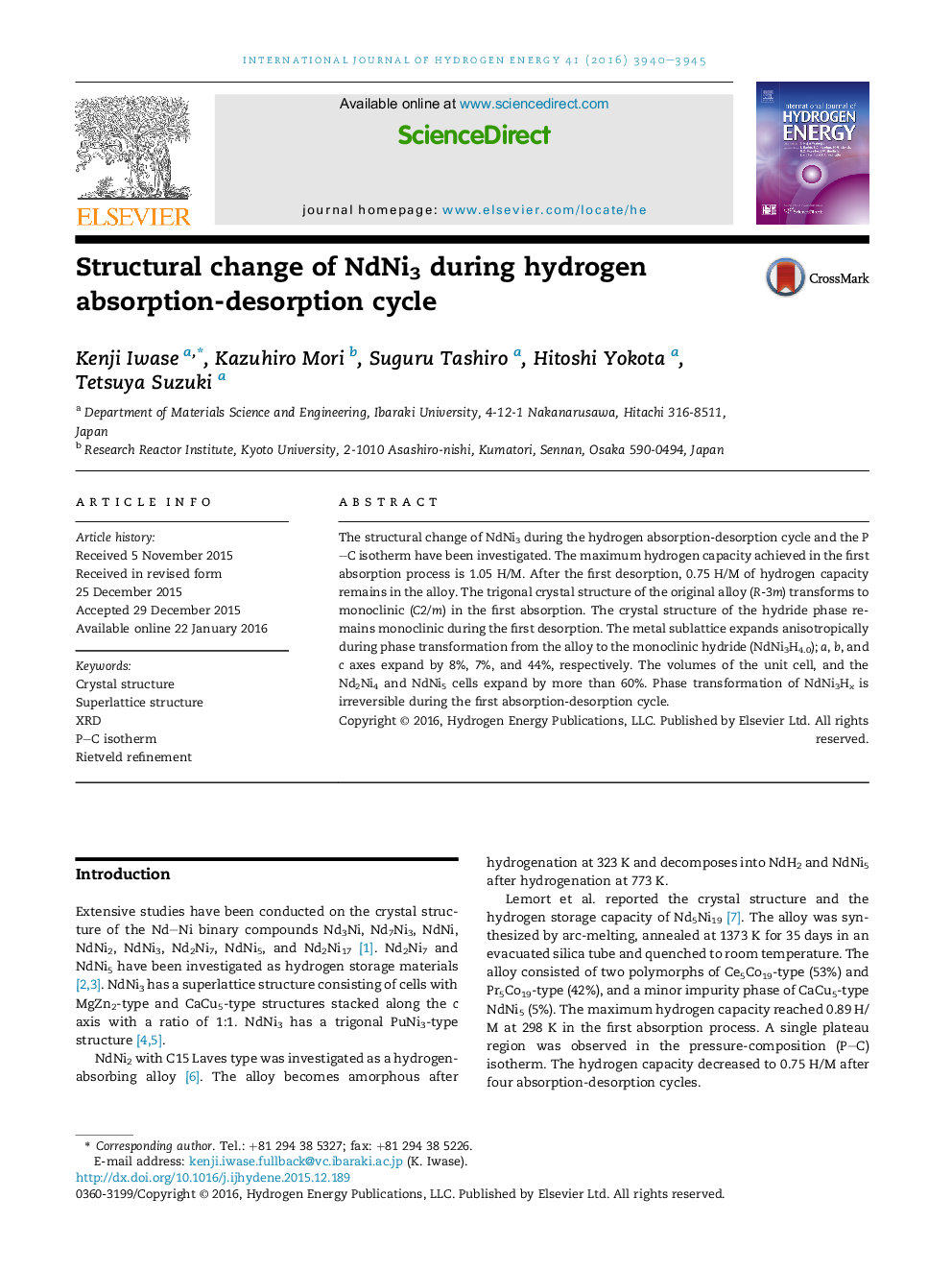| Article ID | Journal | Published Year | Pages | File Type |
|---|---|---|---|---|
| 1277923 | International Journal of Hydrogen Energy | 2016 | 6 Pages |
•The trigonal crystal structure of the original alloy (R-3m) transforms to monoclinic (C2/m) in the first absorption.•The monoclinic hydride (NdNi3H4.0); a, b, and c axes expand by 8%, 7%, and 44% from the alloy.•The maximum hydrogen capacity achieved in the first absorption process is 1.05 H/M.
The structural change of NdNi3 during the hydrogen absorption-desorption cycle and the P–C isotherm have been investigated. The maximum hydrogen capacity achieved in the first absorption process is 1.05 H/M. After the first desorption, 0.75 H/M of hydrogen capacity remains in the alloy. The trigonal crystal structure of the original alloy (R-3m) transforms to monoclinic (C2/m) in the first absorption. The crystal structure of the hydride phase remains monoclinic during the first desorption. The metal sublattice expands anisotropically during phase transformation from the alloy to the monoclinic hydride (NdNi3H4.0); a, b, and c axes expand by 8%, 7%, and 44%, respectively. The volumes of the unit cell, and the Nd2Ni4 and NdNi5 cells expand by more than 60%. Phase transformation of NdNi3Hx is irreversible during the first absorption-desorption cycle.
